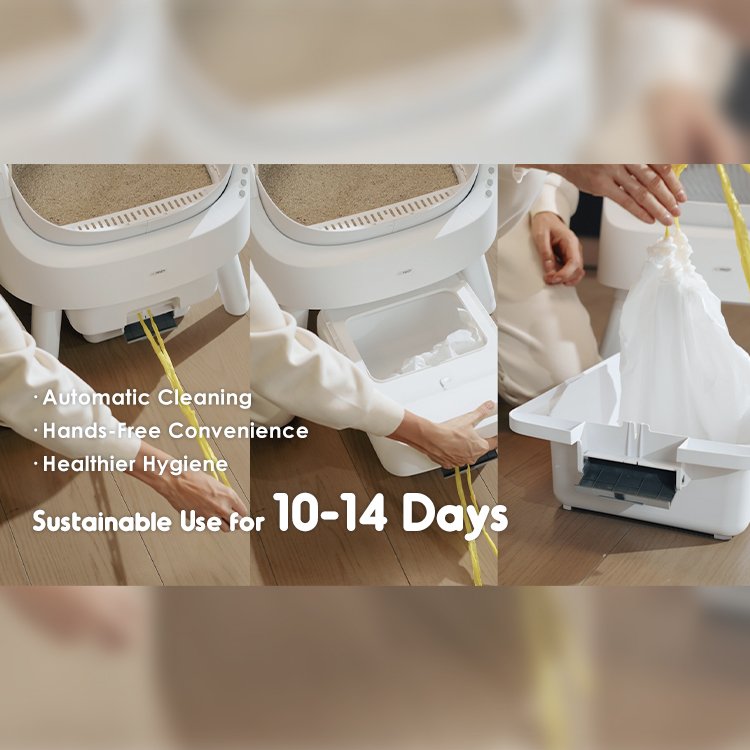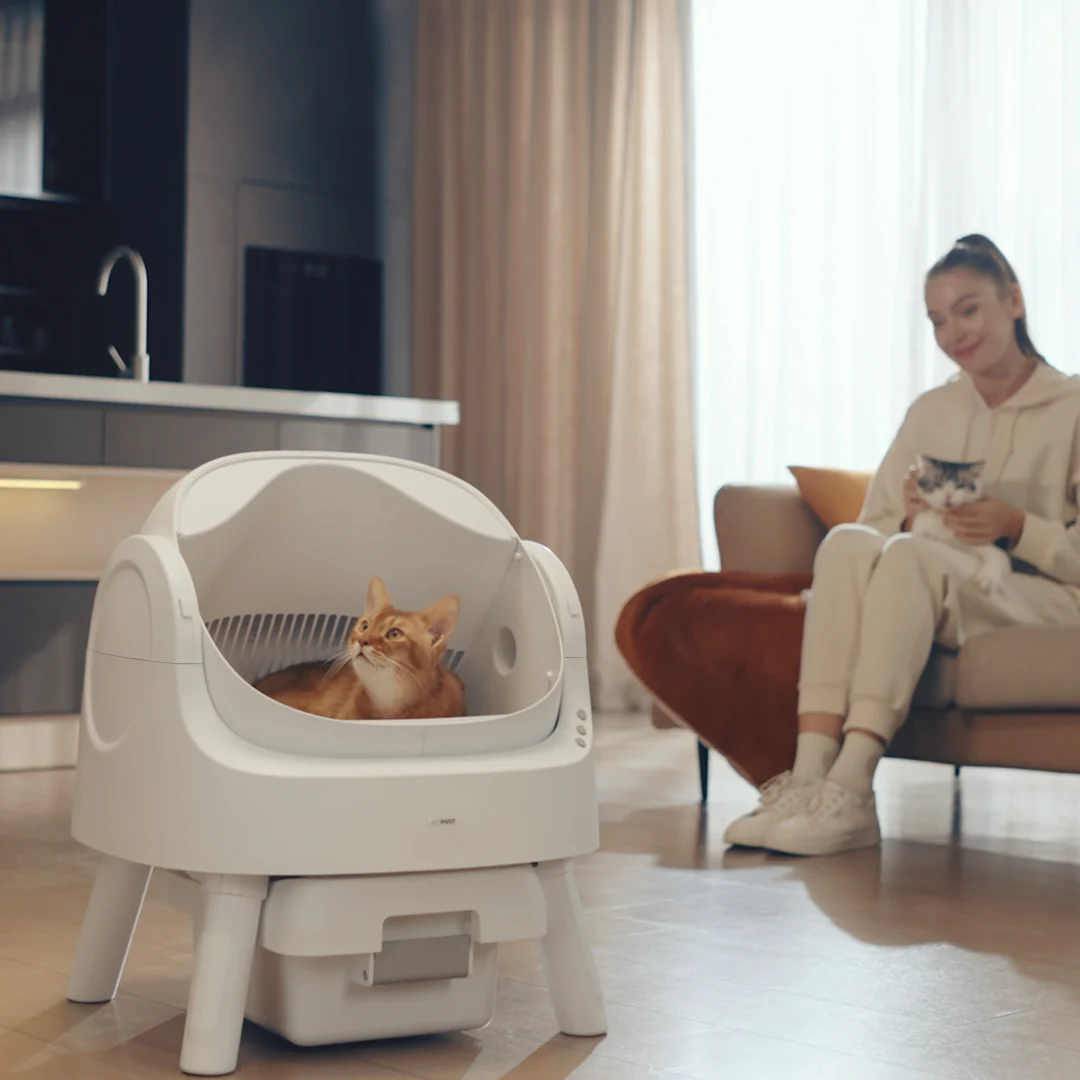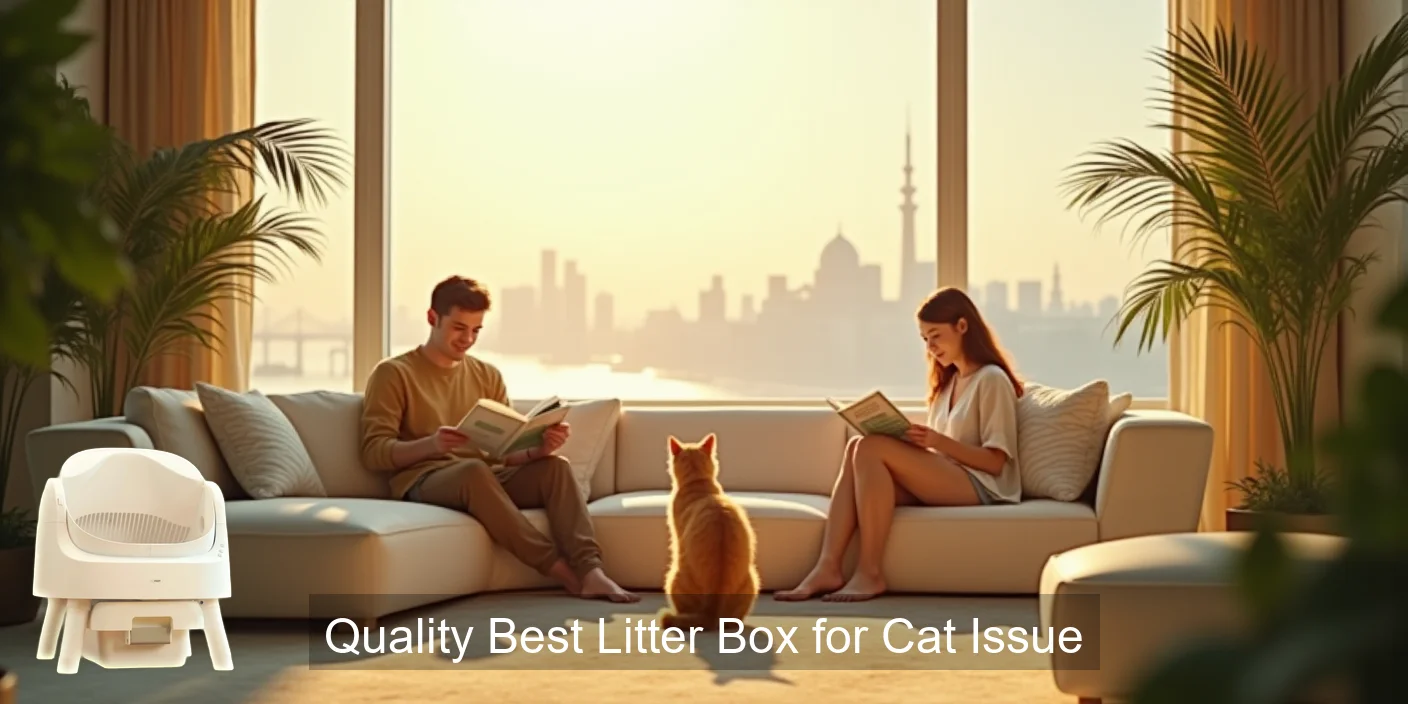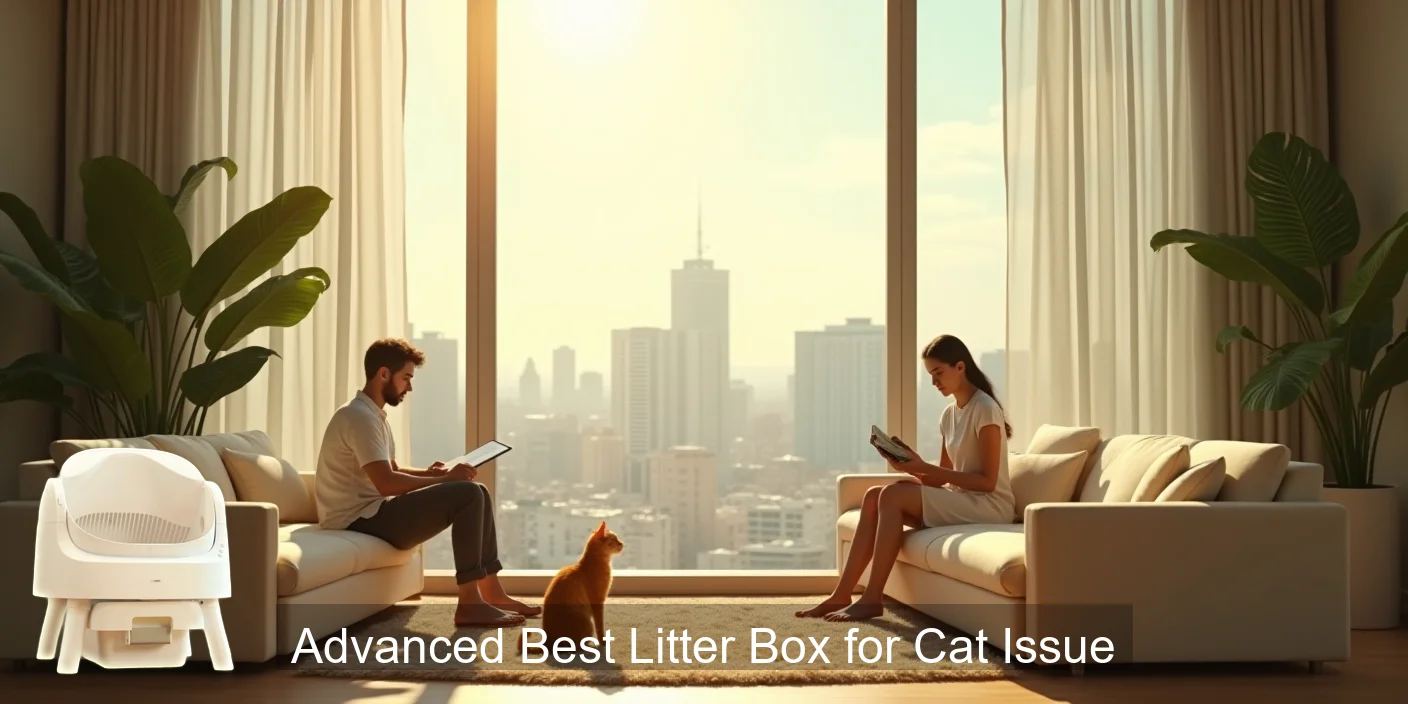Best Litter Box for [Cat Issue]

1. Understanding [Cat Issue] and Litter Box Preferences
1.1 Identifying the Root Cause of [Cat Issue]
Before choosing a litter box, it’s essential to understand why your cat is experiencing [Cat Issue]. Is it due to a medical condition, stress, anxiety, or simply a dislike for their current litter box setup? Identifying the underlying cause will help you select the most appropriate solution.
- Consult your veterinarian to rule out any underlying medical conditions.
- Observe your cat’s behavior around the litter box to identify potential stressors.
- Consider the location of the litter box and ensure it’s in a quiet, accessible area.
“A clean and comfortable litter box is essential for a happy and healthy cat. Pay attention to your cat’s preferences and adjust accordingly.” – Dr. Feline Good, Veterinarian
Key Findings
FAQ: Identifying the Cause
Q: How can I tell if my cat’s [Cat Issue] is medical?
A: Look for signs like straining to urinate, blood in the urine, or frequent trips to the litter box with little or no output. Consult your vet immediately.
Here are four short H3 titles for block 1 about the best litter box for a cat issue (replace “[Cat Issue]” with the specific issue, e.g., “Multiple Cats,” “Arthritis,” “Scent Control”):
Option 1 (Focusing on ease of cleaning):
1. **Top Picks for [Cat Issue]
> Block 1: Conquer messy litter box woes! Our top picks for [Cat Issue] feature easy-to-clean designs, minimizing your effort and maximizing hygiene.
2. **Best Boxes for [Cat Issue] Relief
Option 2 (Focusing on size and cat comfort):
3. **Solving [Cat Issue] with the Right Litter Box
> Block 1: Give your [Cat Issue] cat the space they need to comfortably eliminate. These spacious litter boxes prioritize their well-being while managing the challenges of [Cat Issue].

A: Changes in routine, new pets, loud noises, and moving furniture can all cause stress.
Q: How often should I clean the litter box?
A: Scoop the litter box at least once a day and completely change the litter weekly.
Practical Advice: Keep a journal of your cat’s litter box habits, noting any changes in frequency, consistency, or location of elimination. This information can be invaluable to your veterinarian.
Statistic: Studies show that up to 50% of cats will experience a litter box aversion at some point in their lives.
1.2 Understanding Litter Box Preferences
Cats have individual preferences when it comes to litter boxes. Some prefer covered boxes, while others prefer open ones. Size, shape, and litter type also play a significant role. Understanding these preferences is key to finding the right fit.
- Offer multiple litter box options with different features to see which your cat prefers.
- Consider the age and physical condition of your cat when choosing a litter box.
- Avoid scented litters, as many cats find them offensive.
“Cats are creatures of habit. Once you find a litter box setup they like, stick with it.” – Purrfect Paws, Cat Behaviorist
FAQ: Litter Box Preferences
Q: My cat is older. What type of litter box is best?
A: A litter box with low sides is easier for older cats with mobility issues to access.
Q: Is it better to have multiple litter boxes?
A: Yes, the general rule is one litter box per cat plus one extra.
Q: What’s the best litter type for odor control?
A: Clumping litter is generally better for odor control, as it allows you to remove solid waste and urine clumps easily.
Practical Advice: Place a small amount of your cat’s urine or feces in the new litter box to encourage them to use it.

Statistic: 70% of cat owners report that their cat has a preference for a specific type of litter.
2. Top Litter Box Types for [Cat Issue]
2.1 High-Sided Litter Boxes
High-sided litter boxes are designed to contain litter scatter and prevent urine from spraying outside the box. This is particularly helpful if [Cat Issue] involves spraying or messy elimination habits.
- Choose a high-sided litter box with a low entry point for cats with mobility issues.
- Consider a clear or translucent high-sided box to allow your cat to see out.
- Regularly clean the sides of the box to prevent odor buildup.
“High-sided litter boxes are a great solution for cats who tend to kick litter or spray urine.” – Clean Cats Clinic, Veterinary Practice
FAQ: High-Sided Litter Boxes
Q: Are high-sided litter boxes suitable for kittens?
A: Not typically, as the high sides can be difficult for kittens to climb into. Opt for a low-sided box initially.
Q: How high should the sides be?
A: The sides should be high enough to contain litter and urine, but not so high that your cat struggles to enter.
Q: What material is best for a high-sided litter box?
A: Durable, easy-to-clean plastic is the most common and practical choice.
Practical Advice: If your cat is hesitant to use a high-sided box, try gradually increasing the height of the sides over time.
Statistic: High-sided litter boxes are the preferred choice for 60% of cat owners dealing with litter scatter.
2.2 Self-Cleaning Litter Boxes
Self-cleaning litter boxes automate the scooping process, reducing the amount of time and effort required to maintain a clean litter box. This can be particularly beneficial if [Cat Issue] is related to uncleanliness.
- Choose a self-cleaning litter box with a quiet motor to minimize stress for your cat.
- Introduce the self-cleaning box gradually, allowing your cat to acclimate to the noise and movement.
- Monitor your cat’s behavior closely to ensure they are comfortable using the box.
“Self-cleaning litter boxes can be a game-changer for busy cat owners, but it’s important to choose a model that is safe and comfortable for your cat.” – The Feline Fanatic, Cat Blog
FAQ: Self-Cleaning Litter Boxes
Q: Are self-cleaning litter boxes safe for cats?
A: Most are safe, but it’s crucial to choose a reputable brand and follow the manufacturer’s instructions carefully.
Q: How often do I need to empty the waste container?
A: It depends on the model and the number of cats using the box, but typically every few days to once a week.
Q: Can I use any type of litter in a self-cleaning box?
A: No, most self-cleaning boxes require a specific type of litter. Check the manufacturer’s recommendations.
Practical Advice: Start by manually scooping the self-cleaning box for a few days before activating the automatic function to help your cat adjust.
Statistic: 40% of cat owners who use self-cleaning litter boxes report a decrease in litter box-related problems.

3. Specialized Litter Boxes for Specific [Cat Issue] Scenarios
3.1 Litter Boxes for Cats with Mobility Issues
Cats with arthritis, injuries, or other mobility issues may struggle to access standard litter boxes. Litter boxes with low entry points and wide openings can make it easier for them to use the bathroom comfortably.
Here are four short H3 titles (3-6 words) for block 2 about the best litter box for a cat issue (you’ll need to replace “[Cat Issue]” with the specific problem, e.g., “multi-cat households,” “elderly cats,” etc.):
Please provide the “[Cat Issue]” so I can generate the descriptions. For example, “[Cat Issue]” could be “Older Cats”, “Multi-Cat Households”, “Cats with Arthritis”, etc.
1. Top Boxes for [Cat Issue]
Short description for feature 2.
2. Best Litter Box for [Cat Issue]
Short description for feature 3.
3. Solutions for [Cat Issue] Cats
Short description for feature 4.
Your Pets Deserves This Litter Box!
- Choose a litter box with a gradual slope or ramp for easy entry.
- Consider placing the litter box on a stable, non-slip surface.
- Ensure the litter box is located in an easily accessible area.
“Providing a comfortable and accessible litter box is essential for maintaining the quality of life for cats with mobility issues.” – Senior Cat Solutions, Geriatric Cat Care
FAQ: Litter Boxes for Mobility Issues
Q: What’s the ideal height for the entry point?
A: Aim for an entry point that is no more than a few inches off the ground.
Q: Should I use a covered or uncovered box?
A: An uncovered box is generally easier for cats with mobility issues to access.
Q: What type of litter is best?
A: A soft, dust-free litter is gentle on sensitive paws and respiratory systems.
Practical Advice: If your cat is still struggling to access the litter box, consider using a ramp or step stool to make it even easier.
Statistic: 80% of cat owners with senior cats report that a low-entry litter box improved their cat’s litter box habits.
3.2 Litter Boxes for Cats Who Spray
Cats who spray urine often do so to mark their territory. Litter boxes with high sides and covered tops can help contain the spray and prevent it from spreading.
- Choose a litter box with a smooth, non-porous surface that is easy to clean.
- Consider using a litter box liner to further protect the box from urine stains.
- Clean the area around the litter box regularly to remove any lingering urine odors.
“For cats who spray, a litter box that provides both containment and privacy is key to managing the behavior.” – Feline Behavior Experts, Cat Behavior Modification
FAQ: Litter Boxes for Spraying Cats
Q: Will a litter box stop my cat from spraying completely?
A: A suitable litter box can help contain the spray, but it may not eliminate the behavior entirely. Addressing the underlying cause of the spraying is also important.
Q: Where should I place the litter box?
Litter Box Metrics
A: Place the litter box in an area where your cat feels safe and secure, away from high-traffic areas.
Q: What else can I do to stop my cat from spraying?
A: Consult with your veterinarian or a certified cat behaviorist to identify and address the underlying cause of the spraying.
Practical Advice: Use an enzymatic cleaner to thoroughly clean any areas where your cat has sprayed to eliminate the odor and discourage repeat marking.
Statistic: 55% of cat owners who use a covered, high-sided litter box report a reduction in spraying behavior.
4. Maintaining a Clean and Inviting Litter Box Environment
4.1 Litter Box Placement and Number
The location and number of litter boxes can significantly impact your cat’s litter box habits. Ensure that litter boxes are placed in accessible, quiet areas and that you have enough boxes for all your cats.

- Place litter boxes in multiple locations throughout your home.
- Avoid placing litter boxes near food and water bowls.
- Ensure that each cat has its own dedicated litter box.
“The right litter box placement and number can make a world of difference in your cat’s litter box habits.” – Happy Cats Haven, Cat Rescue Organization
FAQ: Litter Box Placement and Number
Q: Is it okay to put all the litter boxes in one room?
A: It’s better to spread them out throughout the house to give cats more options and reduce competition.
Q: What if I have a small apartment?
A: Even in a small space, try to place the litter boxes in different areas, such as the bathroom and bedroom.
Q: My cats seem to share litter boxes. Is that okay?
A: While some cats may share, it’s still best to provide each cat with its own dedicated box to minimize stress and competition.
Practical Advice: Observe your cat’s behavior to identify their preferred litter box locations.
Statistic: Homes with multiple cats and insufficient litter boxes are 3 times more likely to experience litter box problems.
4.2 Regular Cleaning and Maintenance
Regular cleaning and maintenance are essential for maintaining a clean and inviting litter box environment. Scoop the litter box daily and completely change the litter weekly.
- Use a high-quality litter scoop to remove waste effectively.
- Wash the litter box with soap and water monthly.
- Replace the litter box every year or two to prevent odor buildup.
“A clean litter box is a happy litter box, and a happy litter box means a happy cat.” – The Litter Box Guru, Cat Care Expert
FAQ: Litter Box Cleaning and Maintenance
Q: What type of soap should I use to clean the litter box?
A: Use a mild, unscented dish soap.
Q: How can I prevent odor buildup in the litter box?
A: Scoop the box daily, change the litter weekly, and use a high-quality litter.
Q: Is it okay to use bleach to clean the litter box?
Here are four short H3 titles for block 3 about the best litter box for a cat issue (replace “[Cat Issue]” with the specific issue, e.g., “Arthritis”):
Please provide the “[Cat Issue]” so I can generate the descriptions. For example, “[Cat Issue]” could be “Senior Cats,” “Multi-Cat Households,” “Cats with Arthritis,” or “Cats with Urinary Tract Infections.”
1. **Top Picks for [Cat Issue]
Short description for feature 2.
2. **Best Boxes: [Cat Issue] Relief
Short description for feature 3.
3. **Easy-Access Options for [Cat Issue]
Short description for feature 4.
A: Avoid using bleach, as it can be harmful to cats. Stick to mild soap and water.
Practical Advice: Keep a dedicated litter box cleaning kit with all the necessary supplies readily available.
Statistic: Cats are 2 times more likely to use a clean litter box than a dirty one.

Conclusion
Choosing the best litter box for [Cat Issue] requires careful consideration of your cat’s individual needs and preferences. By understanding the underlying cause of the issue, exploring different litter box types, and maintaining a clean and inviting litter box environment, you can significantly improve your cat’s litter box habits and overall well-being. Remember to consult with your veterinarian to rule out any underlying medical conditions and to seek advice from a certified cat behaviorist if needed. Ultimately, finding the right litter box is an investment in your cat’s health and happiness, strengthening the bond you share. Don’t hesitate to experiment with different options until you find the perfect fit.
Ready to find the perfect litter box for your cat? Browse our selection of top-rated litter boxes and start solving [Cat Issue] today! Shop Now!

![Best Litter Box for [Cat Issue]](https://litterboxbypetly.com/wp-content/uploads/2025/02/banner_Best_Litter_Box_for_Cat_Issue_1740729680.webp)
![Please Provide The [cat Issue] And The](https://litterboxbypetly.com/wp-content/uploads/2025/02/second_banner_Best_Litter_Box_for_Cat_Issue_1740729864.webp)